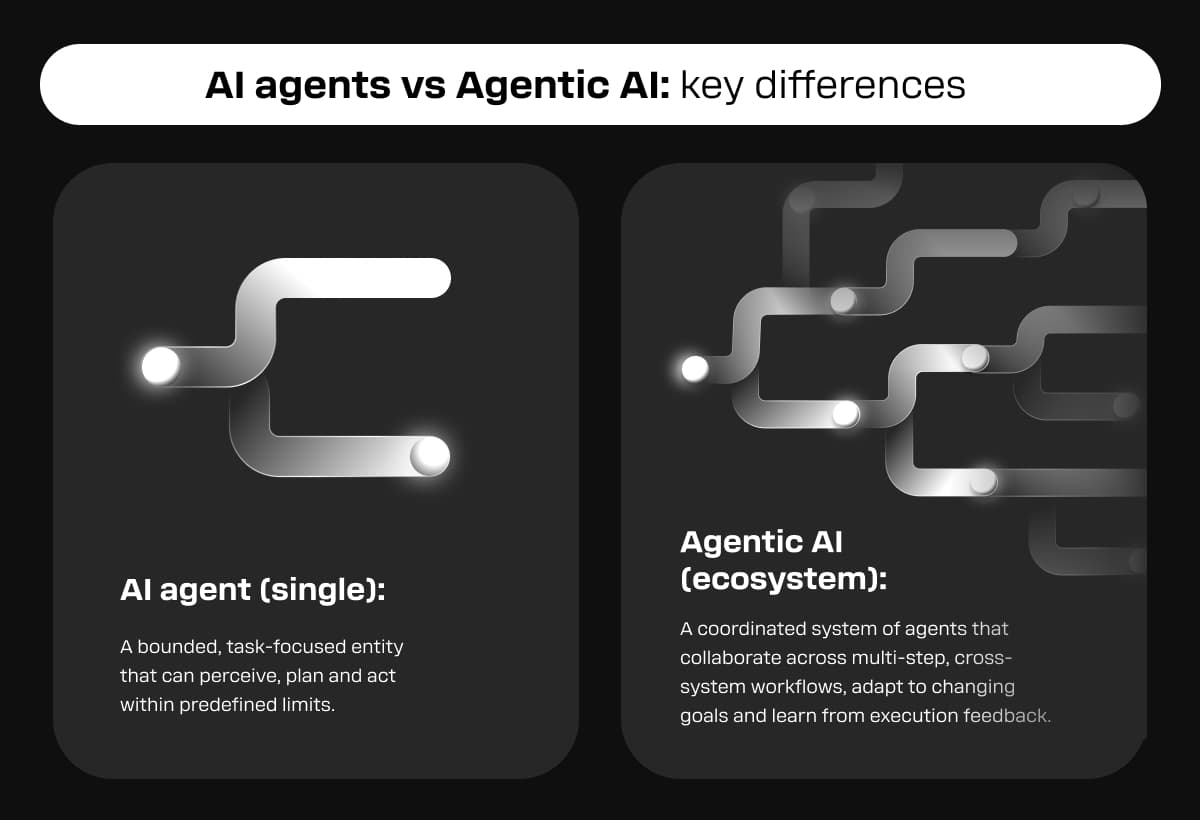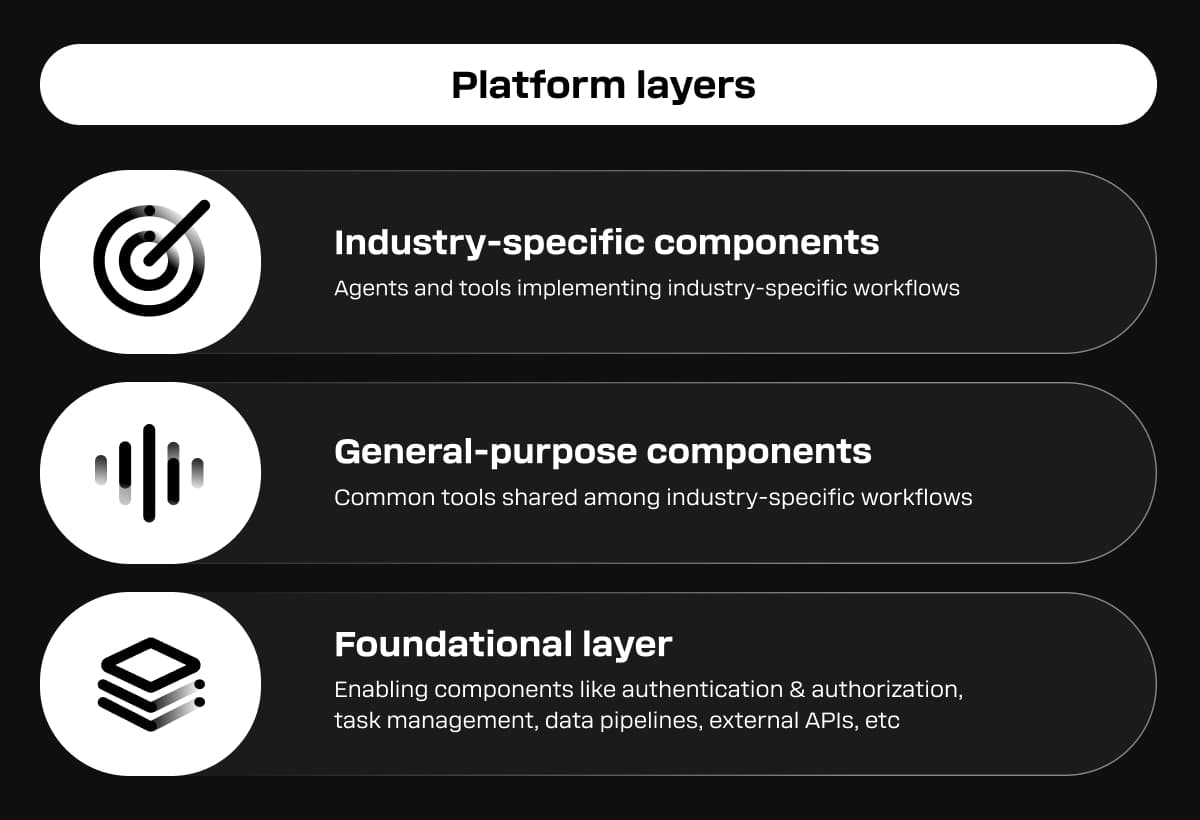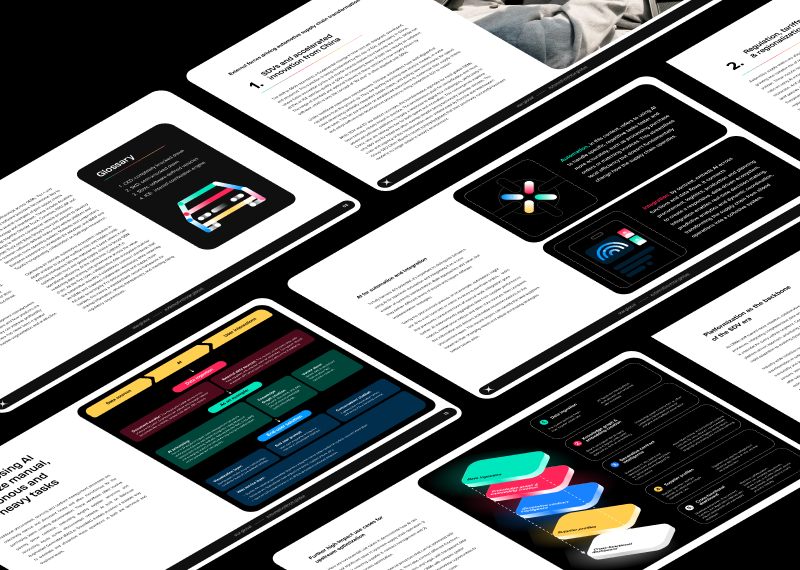Agentic AI refers to AI systems which autonomously pursue goals and perform actions, as opposed to simply generating certain types of content in response to user prompts. By definition, agentic AI ecosystems agents, tools and architectures that are capable of demonstrating agency — they make decisions and take initiative to action with minimal (or zero) human oversight.
The key characteristics of agentic AI ecosystems necessarily include:
- Autonomy: An agentic AI system dynamically plans multi-step actions and chooses tools or operations without needing prompts at each step
- Environment interaction via tool usage: Integrates with external tools, to gather information and/or enact changes in the external digital and physical environment
- Complex reasoning and adaptability: Employs reasoning to handle complex, less predictable conditions. Perceives context, makes logical inferences and adapts the strategy and subsequent actions in real time
- Goal-driven and modular: Each AI agent, acting as part of the agentic system, tends to specialize in one skillset but can also collaborate with other agents to solve evolvingly complex problems and tasks. Importantly, the agentic AI system is goal-driven in its execution
- Persistent memory: Each AI agent in the system, and the whole agentic system, retains information about context, history, and objectives across execution sessions. It exchanges this information with the individual agents in the system, and uses this information for the subsequent learning and adaptation
AI agents and agentic AI ecosystems are closely related but are obviously not the same. While an AI agent typically describes a single, task-focused entity that can act independently within predefined boundaries, an agentic AI ecosystem is a more advanced and a way more powerful paradigm which involves systems composed of multiple coordinated AI agents.

Coordinated agentic AI ecosystem allows execution of more complex goals across varied business environments. Ultimately, agentic ecosystems enable the concept of autonomous enterprise, which certainly is a viable future operating model.
So while the terms agentic AI and AI agents are often used interchangeably in industry discourse, understanding the progression from a single agent to the agentic ecosystem, is crucial for creating a successful enterprise adoption strategy.
What are the key benefits of agentic ai for businesses?
The agentic AI market is expected to reach nearly $50 billion by 2030. That's because agentic AI ecosystems offer compelling advantages for enterprises focused both on improving practical business processes and looking for a transformational overhaul.
Most enterprises now recognize the limits of simple prompt -> response generative AI. In practice simple prompt -> response AI scenarios often lead to fragmented, siloed automation of single business functions.
In contrast, agentic AI provides value through automation across business processes and through the ability to rapidly adapt its activities and outcomes based on evolving goals and execution feedback. As well as automating entire processes, agentic AI also:
- Increases operational efficiency: Speeds up service, development and support cycle times, reduces manual workload, works 24/7
- Continuously learns: They improve workflows and outcomes without requiring constant manual fine-tuning
- Improves decision making: Monitors metrics and KPIs in real-time and makes decisions based on new data
Agentic AI architectures
Deploying agentic AI for enterprise use requires the interplay of several layers and components.

Industry-specific components: Domain-specific workflows and AI agents tailored to your operations. This layer delivers business outcomes by embedding industry logic, compliance and orchestration capabilities into specialized agents. These agents are designed to drive results by adapting to the context and requirements of your sector.
General-purpose tools: Shared AI capabilities. This layer includes tools such as document parsing, knowledge processing, contextual search and action management. Designed to grow and add new features, these tools connect with the enterprise systems and allow for fast deployment while offering consistent governance and interoperability.
Foundational layer: Enterprise core. At the base, the foundational layer manages data pipelines, reliable APIs, automates tasks and enforces strong governance. It allows agentic AI to have enterprise-grade security, embedding policy management, audit logging and scalable infrastructure. This is the critical backbone that allows agents to act autonomously yet safely and transparently across the enterprise.
Building an agentic AI ecosystem
The most successful enterprise AI adoptions use a phased, incremental approach. They start with pilot projects. Begin by identifying 3-5 high-impact uses that involve repetitive tasks or reliance on cross-departmental working. This offers a more disciplined, strategic approach to AI adoption instead of trying to leapfrog over critical steps to reach a long-term vision.
Sometimes I see leaders using technology as a shortcut, and that's detrimental. A sustainable advantage comes from carefully aligning solutions to the outcomes you want to achieve - and then taking an incremental approach to change.
Start with defining the Endgame for the business. And then use the technology as a means to an end, as an enabler for your Endgame.
Building successful agentic AI ecosystems means adhering to the governance and compliance that comes with it. Learn everything you need to know in our report.







